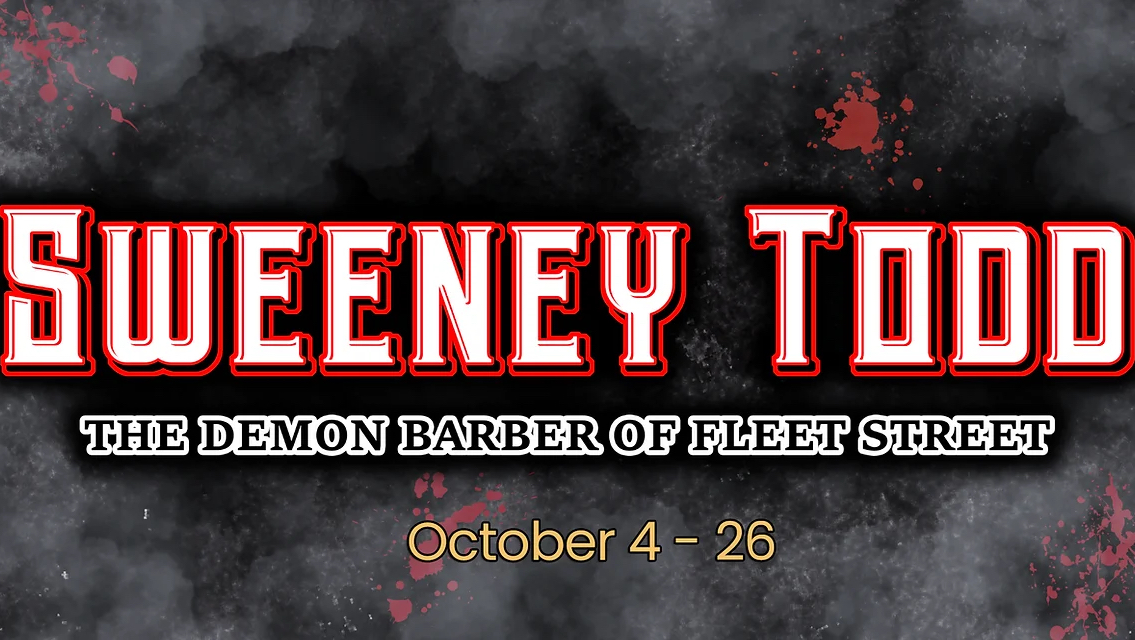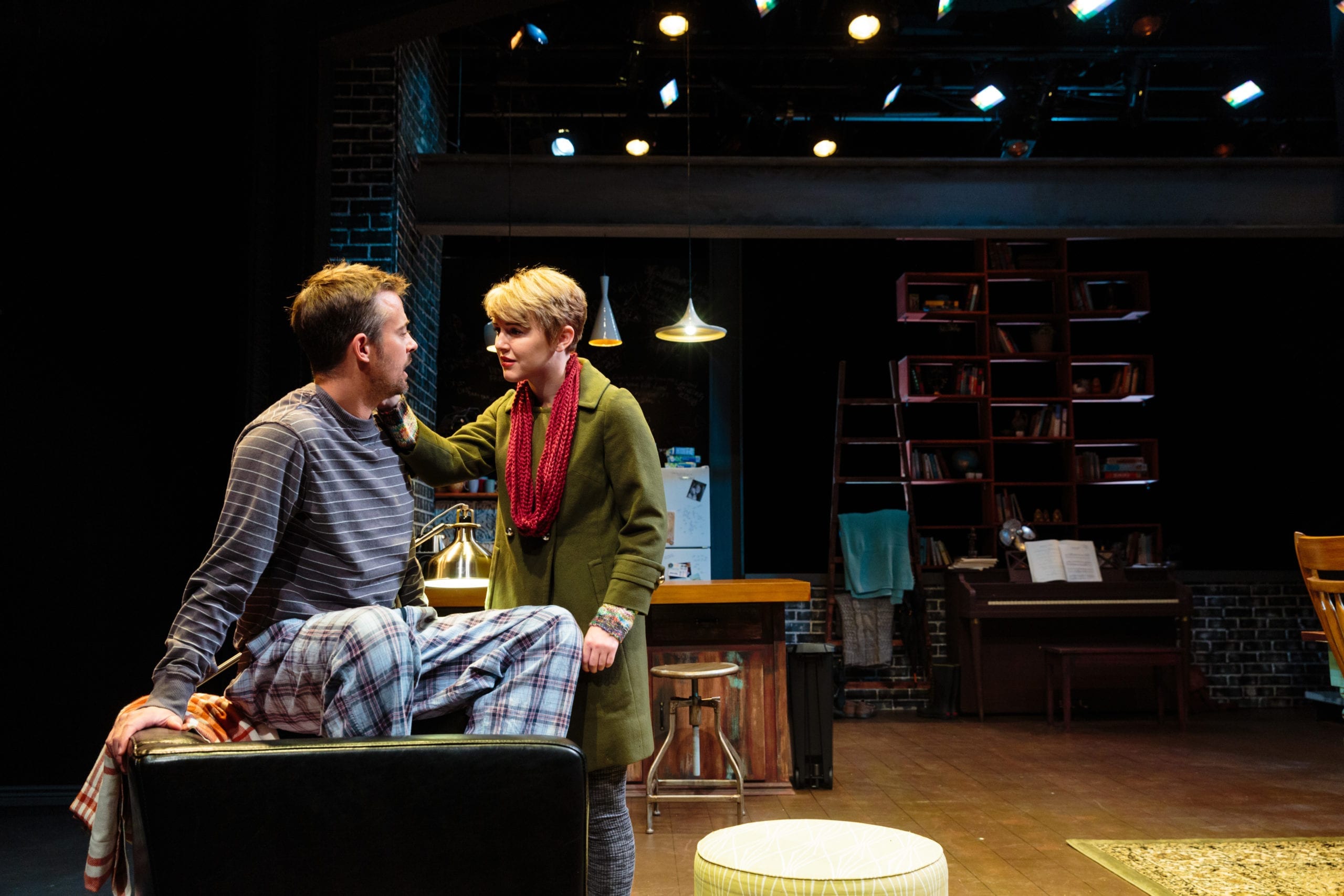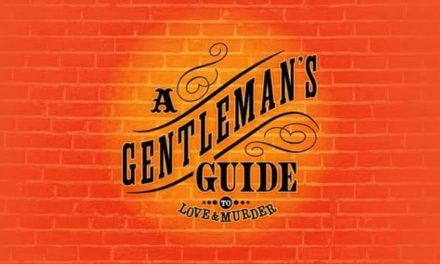OGDEN — How does a tale about a man seeking revenge that somehow gets people baked into meat pies become one of the most beloved classics of the musical theatre stage, especially in the Utah Theatre circuit? Sweeney Todd, the Demon Barber of Fleet Street, with music and lyrics by Stephen Sondhiem and a book by Hugh Wheeler, produced this year at the Ziegfeld Theatre in Ogden Utah, directed by Caleb Parry, is my third time reviewing the show for UTBA and the 11th time we have reviewed a production in Utah since our founding. What keeps audiences coming back to this show since its Tony Award winning production in 1979 (the year I was born) and what did the production team at the Zig do to make their Sweeney one that is worth coming out for this Halloween season?
Upon entering the Ziegfeld, audience members first go through a different door than normal, where they walk through an oldtime meat pie shop and have some horror elements in place before entering into the lobby. This level of detail was a fun way to start the evening. Then when getting into the stage, the set design by Caleb Parry was breathtaking. Centerstage was an organ with pipes surrounding it. Those pipes became part of the set for the rest of the production, becoming walls, doors, even windows. Before the opening number, a cast member came out to begin to play the overture on the organ. The ensemble then came out to sing the opening ballad, Attend the Tale of Sweeney Todd, which was full of haunting and beautiful vocals thanks to music director Jim Christian, and then the organ player turned out to be Sweeney Todd, played masterfully by Cameron Kapetanov, whose entrance in this opening song was a master class in how to open a show. Along with the set, the projection designs by Troy Martell and lighting design by Carson Sabin gave the full evening an ambiance of full macbre that was full of malicious undertones matched with moments of innocence and beauty. The costumes, by Brittney Reid, were exquisite. There were levels of fashion from poor to eloquent, and I was quite taken be how some of this changed especially with the trajectory of the play. This was most evident with Mrs. Lovett’s outfits as she came into more money. These elements were matched by fantastic moments of acting from everyone in the ensemble.
Some of the standouts were Nate Smith as Anthony Hope. Smith’s purity placed against Kapetanov’s anger and frustration as Todd made for an eerie juxtaposition of characters. During the song No Place Like London the way the two players displayed hope verses distain was palpable. Adding in Maggie Gadd as the hilarious yet conflicted character of Mrs. Lovett made for a delightful and thoughtful evening. While of course Gadd’s interactions with Todd were spellbinding, especially in the delightful act one closer of A Little Priest, I found myself most enamored with her connection to Toby, played so well in this production by Fletcher Schweppe. From the time he revealed his hair in Pirelli’s Miracle Elixir to the lovely duet with Gadd in Nothing’s Gonna Harm You, Schweppe was tragically enchanting. On the opposite end of the spectrum, Austin Payne as Judge Turpin displays such a level of piousness that when his true motives toward Johanna, played by Natalie Litchfield, are revealed, the level of discomfort that I felt shocked me, even though I am well aware of the story.
Ginny Tuescher as the Beggar Woman played the role with a different take than I have ever seen, and I truly enjoyed that. I felt that her presence in the song City on Fire, along with the fantastic direction and use of set pieces as part of the choreography and story was a genius move by Parry. So much of the tale of Sweeney Todd is cautionary, of what happens to those of us who focus on revenge so much that we fail to see what is important right in front of us. In the finale performance of the main ballad, I was reminded of how much I enjoy strong ensemble work, because the cast at the Ziegfeld all came to the front of the stage in their fine costumes by Reid, and sang the important line “to seek revenge may lead to hell but everyone does it if seldom as well as Sweeney, As Sweeney Todd.” It is this theme that keeps me coming back to this show time after time, and what makes it interesting to see different directions and different interpretations. On the surface, the premise of the show is absurd enough that it seems strange to even explain. However, when well-directed, it is terrifying enough to see that there are many villains and not very many heroes. The strong direction here and technical elements keep the audience thinking just as Sondheim always wanted with this show.





